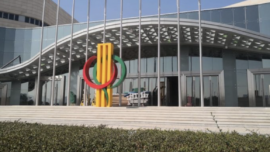New York – Standing beside the Japanese sedan he uses to transport his Uber customers, Fahd lamented the higher gasoline prices that are pinching his bottom line.
“Between the beginning of the month and today, my refueling went from $39 to $50,” the Moroccan-born driver said.
Fahd, who did not want his last name published, has chauffeured clients through the arteries and highways of Manhattan for Uber for the last three years during which he has seen gasoline prices double.
As oil prices have gradually increased, gasoline prices in the US have risen sharply over the last two years.
The increase is bitter pill for those who toil in the increasingly popular ridesharing business. Fuel is one of the main costs facing drivers who work for Uber, Lyft and other smaller application-based services.
Gasoline prices have jumped to $2.96 for a gallon of regular, the lowest grade, up from $2.38 a year ago. That’s an increase of 37 percent from August 2016, according to data from the American Automobile Association.
“Until recently, I used to put $30 of gas every morning before taking my service,” said Amrit, who averages about 12 hours a day of work as a driver for both Uber and Lyft.
“This gradually turned into $40 to $45.”
Discounted fuel
After a two-year dive, oil prices began recovering in spring 2016 and have stayed higher amid OPEC production agreements and rising global demand.
The oil market has recently gotten a lift from the uncertainty generated by the US pullout from the Iran nuclear accord and by ongoing strife in Venezuela.
Under the systems set up by Uber and Lyft, the companies set prices for clients and pay levels for drivers that are not automatically affected by fluctuations in gasoline prices.
The rideshare companies are too new to have experienced an all-out spike in gasoline prices, such as when US gasoline prices rose above $4.00 a gallon in June 2008 shortly before the financial crisis.
But the companies have established some programs to try to cushion the blow to drivers.
For example, Uber has created a debit card that gives drivers a three percent discount when they refill their cars at ExxonMobil gas stations. The discount is only 1.5 percent at other stations.
Uber also agreed to increase fares by five to 10 percent in certain US cities, such as Los Angeles and Washington, due in part to higher gasoline prices.
And Lyft has set up a program with Shell to offer discounts of at least five cents a gallon for refilling at participating Shell stations.
But drivers say the programs don’t make up for the rising prices.
“These reductions are not enough,” Fahd said.
By Ali Bekhtaoui





















